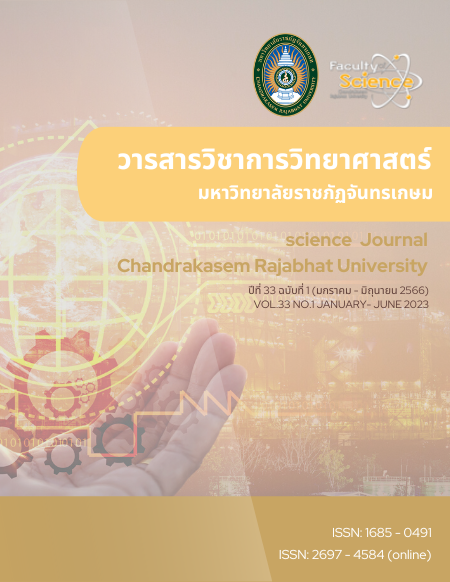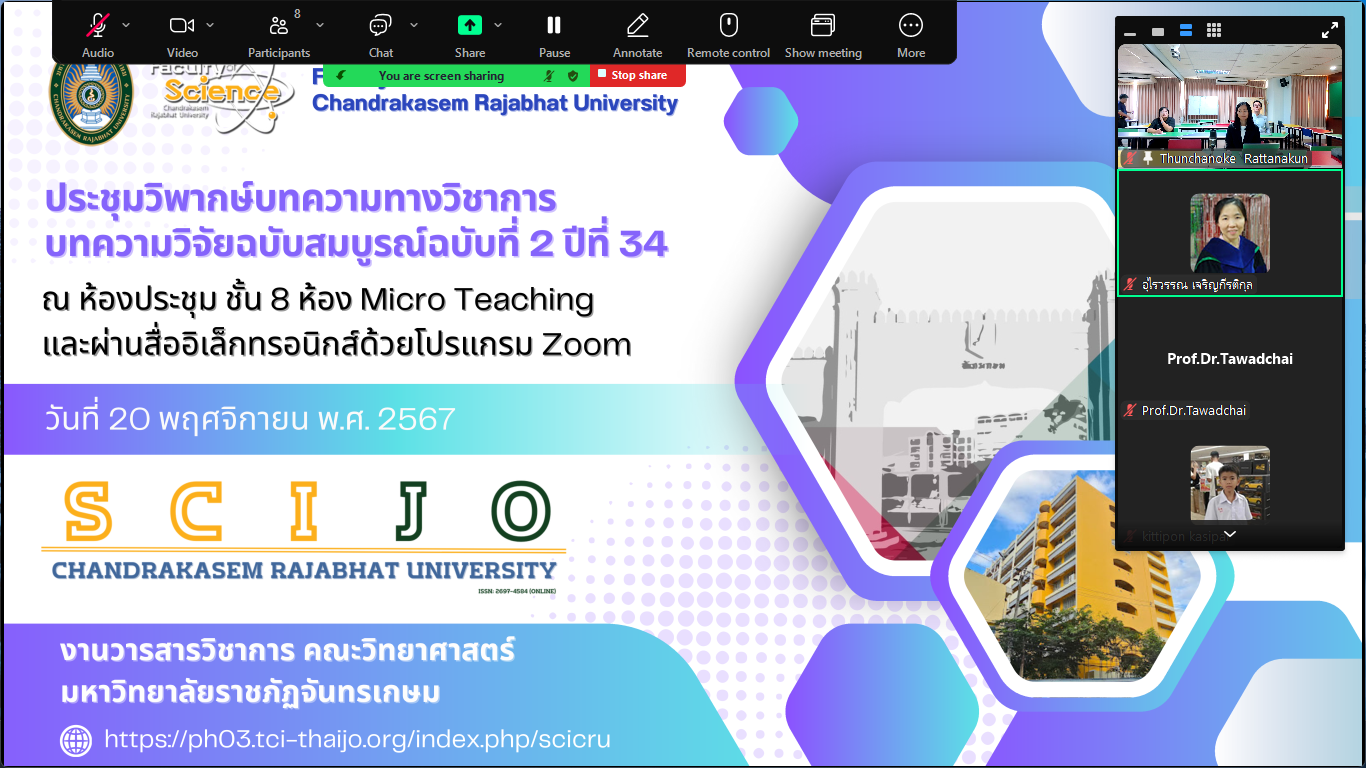Factors Affecting Japanese Learning Motivation for Small Sample
Keywords:
Small sample, Japanese learning motivation, Quantile regression, Bootstrapped quantile regressionAbstract
The purpose of this study is to examine the factors influencing motivation in learning Japanese with a small sample size and develop a predictive model for motivation levels. Two models, quantile regression analysis and bootstrapped quantile regression, are compared using the width of confidence intervals of the regression coefficients as a criterion. The studied population consists of individuals studying Japanese at the B1 level in the Institute of East Asian Studies, Thammasat University. Purposive sampling was employed, specifically selecting 37 participants from Batch 11 of the B1 level Japanese course. A questionnaire was used to assess motivation in learning the Japanese language, focusing on factors of attitudes towards Japan, attitudes towards Japanese people, and the stereotype of Japan. The research findings indicate that the quantile regression analysis at the 2nd quartile level is the most appropriate model, and the factor that had statistically significant relationship with motivation in learning the Japanese language is the stereotypes of Japan, with a Spearman's correlation coefficient of approximately 0.541.
References
กนก รุ่งกีรติกุล, ชฎาภรณ์ จันทร์ประเสริฐ, รุ่งฤดี เลียวกิตติกุล, วันชัย สีลพัทธ์กุล, และ หทัยวรรณ เจียมกีรติกานนท์. (2561). ปัจจัยที่มีผลต่อความอยากเรียนของผู้เรียนวิชาภาษาญี่ปุ่น คณะอักษรศาสตร์ มหาวิทยาลัยศิลปากร. วารสารมหาวิทยาลัยศิลปากร, 38(2), 64-87.
ถวิล นิลใบ. (2562). ควอนไทล์รีเกรสชั่น (Quantile Regression) [เอกสารประกอบการบรรยาย]. คณะเศรษฐศาสตร์ มหาวิทยาลัยรามคำแหง. http://www.eco.ru.ac.th/images/gallery/km/KMecon.pdf
ยุพกา ฟูกุชิม่า, กนกพร นุ่มทอง, และ สร้อยสุดา ณ ระนอง. (2556). ความนิยมในการเรียนภาษาญี่ปุ่นและภาษาจีนของนิสิตมหาวิทยาลัยเกษตรศาสตร์: แรงจูงใจแตกต่างกันอย่างไร. วารสารญี่ปุ่นศึกษา, 30(1), 27-40.
สายัณห์ กอเสถียรวงศ์. (2564). ความเชื่อและความคาดหวังของผู้เรียนภาษาญี่ปุ่นชาวไทยต่อการเรียนวิชาการเขียนภาษาญี่ปุ่น. วารสารศิลปศาสตร์ มหาวิทยาลัยรังสิต, 17(1), 35-58.
ศูนย์ภาษาและวัฒนธรรมเอเชีย (มปป). ประวัติความเป็นมา. สืบค้น 10 พฤษภาคม 2566 ,จาก
https://sites.google.com/a/asia.tu.ac.th/languagesieas/
Furuoka, F., Nikitina, L., & Paidi R. (2019). Using bootstrapped quantile regression analysis for small sample research in applied linguistics: Some methodological considerations. PLoS ONE, 14(1), 1-19. https://doi.org/10.1371/journal.pone.0210668
O.John, O. (2015). Robustness of Quantile Regression to Outliers. American Journal of Applied Mathematics and Statistics, 3(2), 86-88.
Downloads
Published
How to Cite
Issue
Section
License
Copyright (c) 2023 Chandrakasem Rajabhat University

This work is licensed under a Creative Commons Attribution-NonCommercial-NoDerivatives 4.0 International License.
บทความที่ได้รับการตีพิมพ์เป็นลิขสิทธิ์ของมหาวิทยาลัยราชภัฏจันทรเกษม
ข้อความที่ปรากฎในบทความแต่ละเรื่องในวารสารวิชาการเล่มนี้เป็นความคิดเห็นส่วนตัวของผู้เขียนแต่ละท่าน ไม่เกี่ยวข้องกับมหาวิทยาลัยราชภัฏจันทรเกษม และคณาจารย์ท่านอื่นในมหาวิทยาลัยแต่อย่างใด ความรับผิดชอบองค์ประกอบทั้งหมดของบทความแต่ละเรื่องเป็นของผู้เขียนแต่ละท่าน หากมีความผิดพลาดใดๆ ผู้เขียนแต่ละท่านจะรับผิดชอบบทความของตัวเองแต่เพียงผู้เดียว




 For Author
For Author


